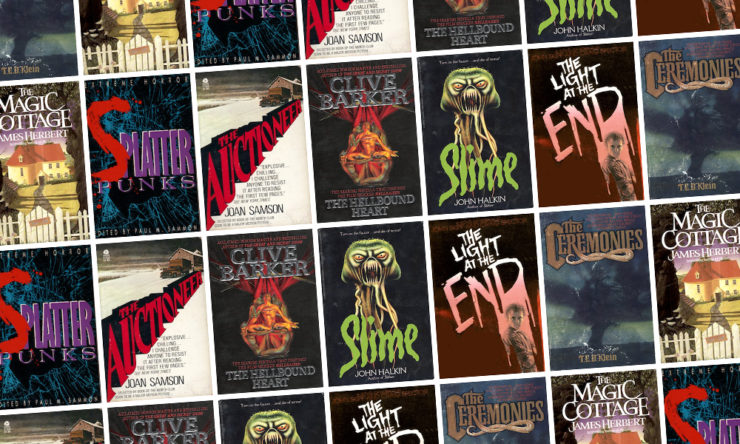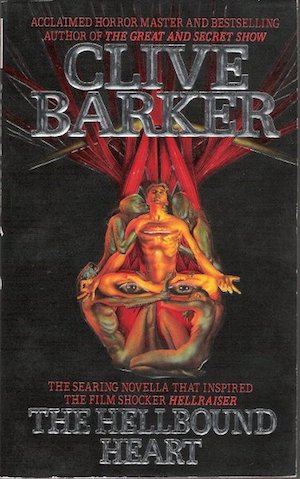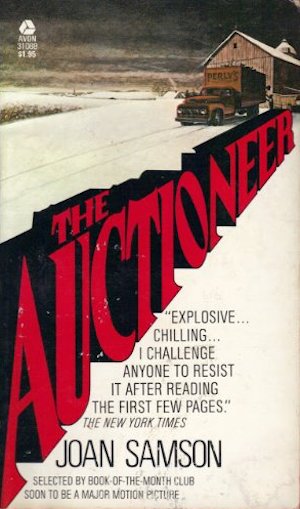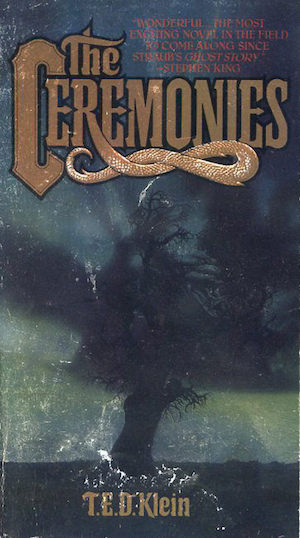I came of age as a horror-head in the ’80s. I exited that dizzying decade as a disaffected teenager with a Gordon Gekko collar… no, probably a Chip and Pepper shirt. I grew up in the greatest boom of horror books North America has likely ever seen. Stephen King was at the height of his powers—though he was no slouch in the ’70s and hasn’t waned since. But not only King: Koontz, Barker, Simmons, Straub, McCammon, Rice, and others hit highs. It was perhaps too crowded a marketplace, and as such some writers may have gotten lost, as unfortunately happens.
The big thing back then seemed to be making the leap from paperback to hardback. Nowadays hardcovers and paperbacks—trade paperbacks, or French-flapped hybrid paperbacks—may be more commonplace than mass-market paperbacks, depending on the genre. But in the ’80s, MMPB was king. Zebra, Pinnacle, Tor, Daw, Orbit, Sphere, Leisure (I think) and others were putting out tons of paperback horror books. Now some writers came out of the gate in hardback, but others had to ascend from the paperback spinning-racks (found at all drugstores and supermarkets) to prove themselves “hardback worthy.” Not all did. Not all of them gave a damn about doing so, if it meant writing stuff they weren’t interested in. My sense—and I can only imagine Grady Hendrix and others agree on this—is that while good horror is never a cheap thrill, it is sometimes best enjoyed in its cheapest format. I have my Kings and Barker and Rice hardcovers, sure, but my old paperbacks really show how much they’ve been read, wearing their scars in the creases of their spines, the bald spots on their foil-stamped covers and their rounded edges. Like old dogs, you can see how much they’ve been loved just by looking at them.
But I guess what I remember most about that decade is how it solidified in me a sense of what I really dug about horror. My nascent aesthetic, you might say. Nowadays I’ve become a much more rounded horror aficionado—you can toss me a Victorian chiller, a psychological mind-bender, a supernatural confection, or a piece of Lovecraftian whimsy and I will undoubtedly find something worthwhile and interesting in it. But back as a pimply and hormonal preteen and teen, it was all about excess. If there was a top to go over, I wanted my reading material to storm those battlements. I wanted to read stuff that woke the neighbors, as my country’s troubadour Bryan Adams would have sang that decade. Something to ruffle the tail feathers of those Reaganite squares and break the rules with sneering indifference—which suited me fine, because hey, sometimes I didn’t wear goggles in shop class, so I knew a thing or two about rebellion…that’s a lie. I always wore goggles. I suppose that’s why those rule-breaking, over-the-top sorts of books always appealed to me. They went where I feared to tread.
Here, forthwith, are seven of the books that fit that aesthetic for me. Not all of them are gross-outs. Some are actually pretty subtle. But they felt dangerous to me, either overtly or in a more subdued way that still managed to get under my pimply skin. I suppose a few were gateway books—the ones that flushed me out of my gross-out silo (not to claim that I’ve ever left that silo) into the more open spaces where diverse horrors lurked. All of these books will be known to the cognoscenti of horror. Most may be known to casual horror-ites. A few, however, may be unfamiliar. They can still be purchased (bless the online marketplace!), though I imagine the copy that shows up in the mail will be yellowed, its gaudy cover faded and tattered. But I hope these books provide you with the same joy and fear that they gave me as an impressionable youth.
The Light at the End — John Skipp and Craig Spector
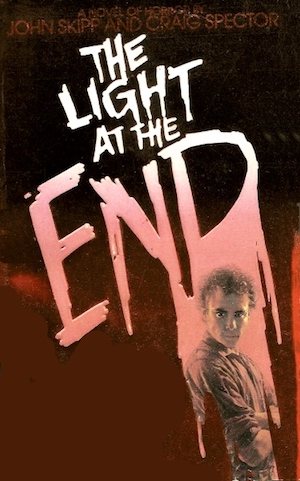
Writing collaborations augur to be tricky beasts, but Craig Spector and John Skipp spent the early part of their careers as a team. The Light at the End is their first and best-known book. “Vampires in the subway tunnels of New York” is the elevator pitch, but really, the novel’s main attraction is its style: They write in a blistery, crazed, balls-out punk-rock fever. A lot of first books are like that. The writer (or writers, here) take massive risks, swinging for the fences with every at-bat; when it works, there’s a power and a truth that rocks, or shocks, a reader. It certainly rocked-and-shocked me when I read it as a teen.
The Magic Cottage — James Herbert
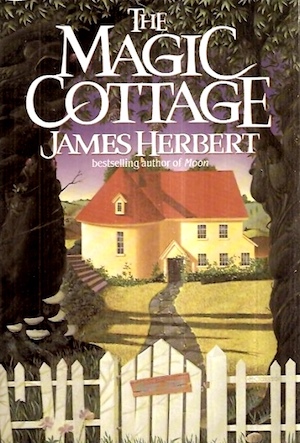
Some readers feel the need to bag on Herbert (and fellow British horror scribe Guy N. Smith) for being, hmmm, let’s say a little ‘earthy’. Nobody—much less Herbert himself, I’m sure—would levy the opinion that the man wrote pure literature, but that was neither the point, or (I’m guessing) what his readers really wanted. They wanted a fleet, propulsive narrative punctuated by a bit of ooey gooey gore, and by damn Herbert delivered. Not to mention he got better as a stylist in later books like The Magic Cottage, where a group of mischievous cultists plague a polite English couple at an out-of-the-way country house.
Slime — John Halkin
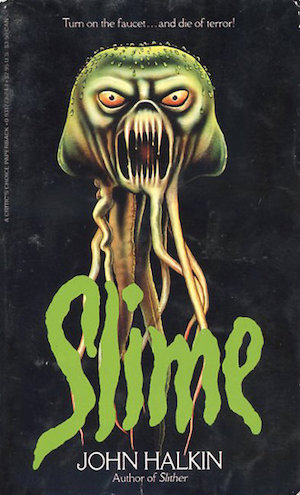
I mean, killer jellyfish stalking the British coastline! How can you go wrong? For me, jellyfish hit that sweet spot between looking kind of cool—mesmerizing even—but also being so brainless and so voluminous as to feel wholly threatening in the right context—that is, if (like any bozo victim in an ’80s horror pulp) you find yourself a hundred feet from shore with what look to be rubbery pink umbrellas opening up on the water’s surface all around you…. This is definitely in the vein of Herbert’s The Rats, which is to me the granddaddy of the “angry animals” books—basically, a series of vignettes where a character is introduced, sketched out a bit, and then bites the dust in an inventive and often painful and/or grisly fashion. Hella fun.
SplatterPunks Anthology — edited by Paul M. Sammon
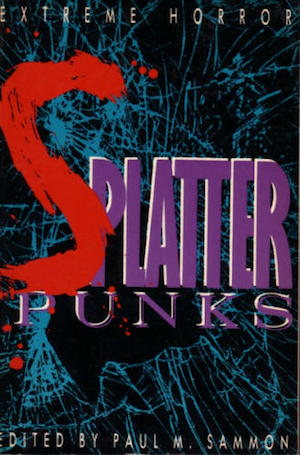
If there’s one thing that teenagers—well, a certain breed of teenager—are drawn to, it’s the extreme. Teens often fancy themselves disaffected, louche, un-shockable…and it takes a lot to make them drop that pose. For ’80s horror teens, the Splatter Punks anthologies were what the Sex Pistols were to ’70s punk rockers—and the aesthetic was blatantly punk, as its title promised: lewd, crude, take-no-prisoners, unafraid to ruffle feathers, and decidedly not your auntie’s horror (providing your auntie was even cool enough to read horror). Suffocating Victorian ghost stories? Eerie gothic tales? Throw that in the trash! Splatter-Punk was about youth, freedom, and the erasure of all boundaries of good taste. A lot of the writers in the anthology—George R.R. Martin, Clive Barker, Joe R. Lansdale, among others—went on to become legends.
The Hellbound Heart — Clive Barker
Most horror buffs have seen Hellraiser, or one of its many sequels (for my money, the second film’s the scariest of the bunch—at least that was how my 13-year-old self felt about it). But how many have read the horrifying novella it was based on, written by the film’s director? Barker must be one of a tiny handful of writers to not only write the screenplay based on his work, but also direct the film itself (the only other one who comes to mind is Norman Mailer’s Maidstone, and that was… not great). Barker’s a visionary. Garth Marenghi also labeled himself that, but Barker really is. His novella is among the very best of ’80s horror—or horror of any era—and those old Sphere paperbacks of The Hellbound Heart and The Books of Blood, with cover illustrations by Barker, hold an honored place on my bookshelf.
The Auctioneer — by Joan Samson
Okay, so this is one was published earlier than our 1980s cutoff—1979. But I read it in the 80s, so I’m sneaking it in because it deserves more attention that it’s ever really gotten. Perly Dunsmore shows up in the quaint (they’re always quaint, aren’t they?) town of Harlowe, New Hampshire to start up an auction. At first, he only asks that the townsfolk provide to the auction what they can, for the benefit of the community. As time goes on and Perly’s power grows in ways both subtle and not, he begins to ask for more… and more. Shades of Animal Farm and Needful Things in this one. It left me with a lingering dread in my younger years, and I still think about it today.
The Ceremonies — T.E.D. Klein
This came out in hardback first, but I remember finding the dinged-up, vellum-covered paperback copy in Calgary’s Chinook library back in the late 1980s. Before Klein expanded it into a full-length novel, the story had started out as novella (“The Events at Poroth Farm”), which was initially something of a turnoff—to me, horror was either novel-length or short stories, not this weird in-between length. The Ceremonies/“The Events at Poroth Farm,” along with the novellas collected in Klein’s collection Dark Gods helped change that outlook. T.E.D. Klein is something of a secret password among horror-ites of my vintage—you usually have to drill down through the bedrock, past King and Barker and Koontz and Rice at the earliest strata, Simmons and McCammon and Lansdale, Saul and Herbert and John Farris and others before you hit the wellspring of writers like Klein, who exist in the sub-sub-strata, which only the most dedicated miners dig down to. But there are some rich deposits down there—just not ones whose gifts may always be appreciated by airport-book readers (not to say I don’t dig a good airport novel myself). Anyway, Klein’s Lovecraft-inspired novellas are truly scary, uncanny—there are echoes of the work of Ligotti or Vandemeer, though all three writers are unique in their own ways. But that sense of wrongness, and the heartless machinations of an uncaring universe…yes, Klein does that very well.
CRAIG DAVIDSON was born and grew up in St. Catharines, Ontario, near Niagara Falls. He has published three previous books of literary fiction: Rust and Bone, which was made into an Oscar-nominated feature film of the same name, The Fighter, and Sarah Court. Davidson is a graduate of the Iowa Writers’ Workshop, and his articles and journalism have been published in the National Post, Esquire, GQ, The Walrus, and The Washington Post, among other places. He lives in Toronto, Canada, with his partner and their child. His newest book, The Saturday Night Ghost Club, is available now from Penguin Books










